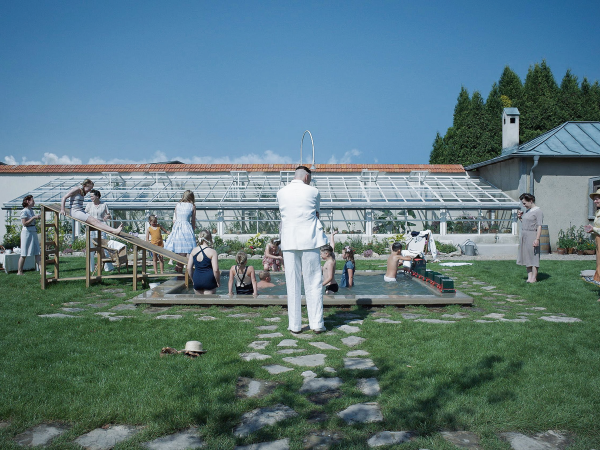Dennis Broe gives us a brief tour of Vienna: its history, museums and galleries. Above image: the restored Wien Museum, site of a city grappling with its past
What to say about Vienna? A divided city, poised between a gleaming future, voted in poll after poll the most livable city in the world, as a result of its socialist and social democratic reforms, and a torturous past, with both an absorbing intellectual and cultural tradition, in large part thanks to its Jewish population and a breeding ground for antisemitism and perhaps cradle of the Zionist worldview that is currently inflaming the Middle East, or, in the view of the global South, West Asia.
All these aspects of the city were on view this last holiday season as the city opened new museums devoted to its history. There was the newly restored Wien Museum, which did its best to question and foreground aspects of the city’s troubled past, and the Strauss House, a privately owned monument to the three Strauss family members of composers and musicians who had a popular tune, often a waltz, for every occasion. These included “The Revolution March” for the 1848 uprising which saw barricades in front of the city’s most famous landmark, St. Stephen's Cathedral, and the “Demolition Polka” written at the time of the pulling down of the medieval city wall to create the modern ring.
That work was done mostly by migrants, shipped in and then shipped out as the work was finished with the dust from the wall causing pulmonary tuberculosis, called the “Viennese disease,” in the workers and residents for the next five decades after the mid-1850s, and recalling the U.S. use of Chinese to perform the dangerous work of building the intercontinental railroad in the Sierra Nevadas where many of them perished and where, like that on the ring, their work was never acknowledged.
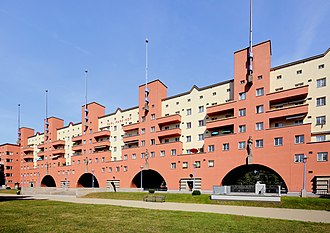
Red Vienna: Karl-Marx-Hof, built between 1927 and 1933
The city’s reputation as the most livable in Europe begins with affordable housing, with 40 percent of all housing either public or subsidized by the city, and 60 percent of all tenants living in these homes. It was during the time of Red Vienna, following World War I, that large scale housing was built for the city’s poorest. They moved out of the hovels that barely sheltered them to modern apartments with electric and gas, then and now supplied by publicly owned utility companies, like the majestic and cheap transit system consisting of subways, buses and trolleys seamlessly crisscrossing the city.
As in any global city, public housing is now being contested with the omnipresent cranes, the sign of new private apartment complexes and condos being erected. As the Wien puts it, housing “is becoming a commodity” and, as the exhibit said disapprovingly “fixation on ownership does nothing to foster solidarity.”

Ominous cranes dot the landscape
The city continues to be one of the great centres for both performing and visual arts, especially music. The latter was on display at the Vienna Concert Hall where the Vienna Symphony under the baton of 83-year-old conducting phenomenon Christoph Eschenbach performed a spirited, energetic, and passionate rendition of Tchaikovsky’s Opus 35. It was led by Bloomington Indiana’s own Joshua Bell’s superb phrasings on an equally spirited violin, followed by a more conventional number from the opera Eugene Onegin and the holiday staple Ballet-Suite from The Nutcracker.
On display also was Raphael’s tapestry designs at the Kunsthistorisches (Art History) Museum, one of which featured the evangelist Paul getting help from above to strike down a rich man who refused to share his wealth. This gave the lie in the present to the latest neoliberal guilt-assuaging mechanism known as Effective Altruism, which in Sam Bankman Fried mode simply translates as “steal as much as you can and give a little back loudly.” Then there was Michelangelo’s anatomically perfect male nudes at the Albertina, culminating in a room full of Egon Schile’s twisted contorted male and female nudes, the expression of desperate sexuality in a world, amidst the first World War, in pain and chaos.
A Tortured History
Behind every great fortune is a great crime, and Vienna’s fortune was founded on kidnapping and ransom. In the 12th century Richard the Lionheart, returning from mass looting during the Crusades, was discovered in disguise and captured when he used gold coins lifted from the Byzantine empire. His British kingdom paid a huge amount to redeem him and it was with this money that Vienna built its city walls.
Speculation in the city also reached a frenzy when the crash of the Viennese stock market in 1873 triggered a global recession that also devastated the U.S. economy, and resulted in a rapid monopolization and the Gilded Age era of the robber barons.
The city does unfortunately have a history of rabid anti-Semitism, openly paraded during the fin-de-siecle administration of its mayor Karl Lueger. Lueger, founder of the Christian Social Democracy Party, did bring the city’s utilities—transportation, gas, water and electricity—under public control but he rationalized these takeovers by xenophobic means as a method of warding off British attempts at controlling the city.
Vienna’s globally famous culture was defined by the likes in psychology of Freud’s psychoanalysis and discovery of the unconscious, in drama by, according to Freud, his “double,” Arthur Schnitzler, by the Expressionism of painters like Max Oppenheimer, whose work is on display at the Leopold, and Oscar Kokoschka (at the Albertina modern), and in music with the twelve-tone discordant compositions of Arnold Schoenberg, an explanation of which is on display at the Schoenberg Center, all originating from a Jewish milieu. At the same time, and possibly as a reaction, Lueger gave open expression to Jewish stereotyping and enflamed prejudice.
Two of the city’s most famous one-time residents were formed in this crucible. Theodore Herzl, the founder of Zionism, which is currently threatening to lead the world into a full-scale war in West Asia (The Middle East), originally favored assimilation for Vienna’s Jewish population. However, because of the virulence of the antisemitism in the city he turned instead to embracing a Jewish separatist homeland and state – now the apartheid state of Israel.
The other famous visitor, from his hometown in Linz, was Adolf Hitler, who arrived in the city during the last three years of Lueger’s reign and hatched his own lethal form of antisemitism.
There is a statue of Lueger at the Volksoper (the People’s Opera), which the mayor helped found and which over the holidays revived an operetta from the time of the Nazi invasion ,overlaid with a contemporary plot about its Jewish producers and directors’ fear of what will happen to them.
The more interesting Lueger statue though sits opposite the MAK, the Museum of Applied Arts, which boasted a fascinating exhibition highlighting both the creativity and wastefulness of fashion and the textile industry which alongside the arms industry and the Pentagon accounts for over 10 percent of the worlds CO2 and 20 percent of its water pollution.
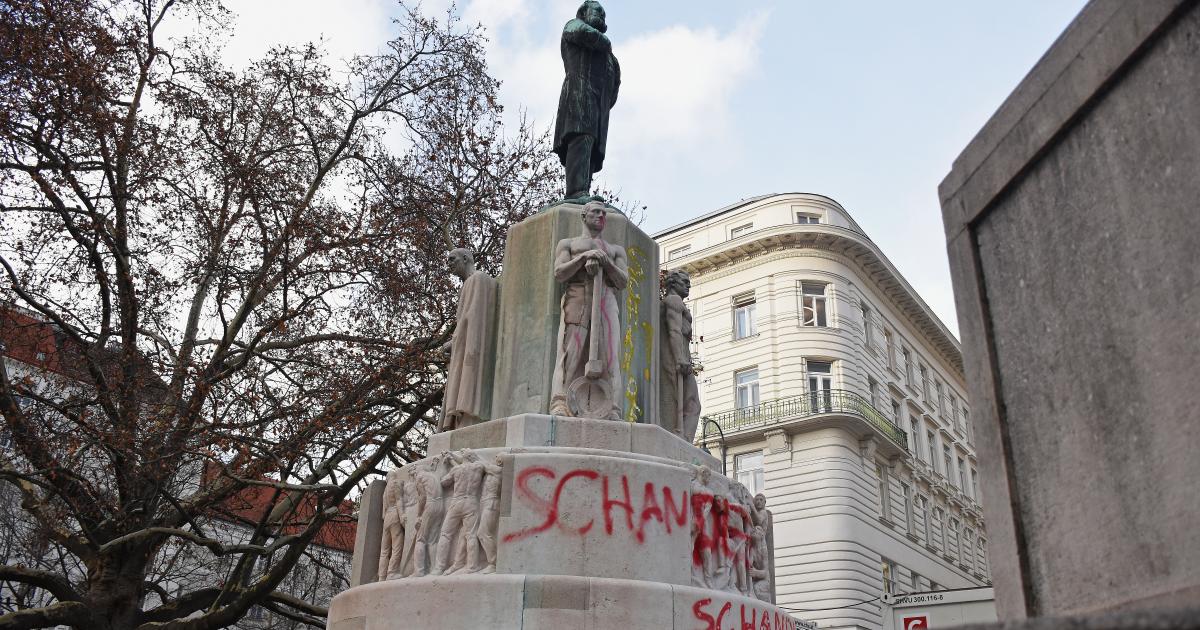
The Lueger Statue graffitied
The statue presents a heroic Lueger posed atop the workers of the city of whom he claimed to be their champion. The interesting thing about the statue though is that in the wake of the Black Lives Matter protests and defaming of slave traders’ statues in Europe, it has graffiti markings all over it. The back of the statue has the word “Nazi” scrawled on it and the front says, “I never felt so free,” markings made in 2022. The city left both the statue and the graffiti, a fitting way of both displaying and commenting on this conflicted and tortured period of its history.
The Not-So-Distant Nazi Past
According to the Wien Museum, when in 1938 the Nazis marched into the city, even they were surprised by the virulence with which the Viennese persecuted and robbed its Jewish population. As detailed in the 2023 novel The Vienna Writers’ Circle, Freud, before leaving the city, was required to provide a complete accounting of everything he owned. Today, visitors to the Freud Museum will find much of his collection of African and other artifacts which he was forced to leave when he moved to London.
This systematic looting was carried out by the vacuously named “Department of Property Transactions” and included stealing artworks, particularly by Max Oppenheimer and Oscar Kokoschka. Oppenheimer’s abundant and important work was sidelined because it had to be left when he fled (there is a painting in the Wien donated by a Gestapo officer) and Kokoschka’s pioneering Expressionist work was drained of its energy in exile, except for a brief anti-fascist mural period during the war.
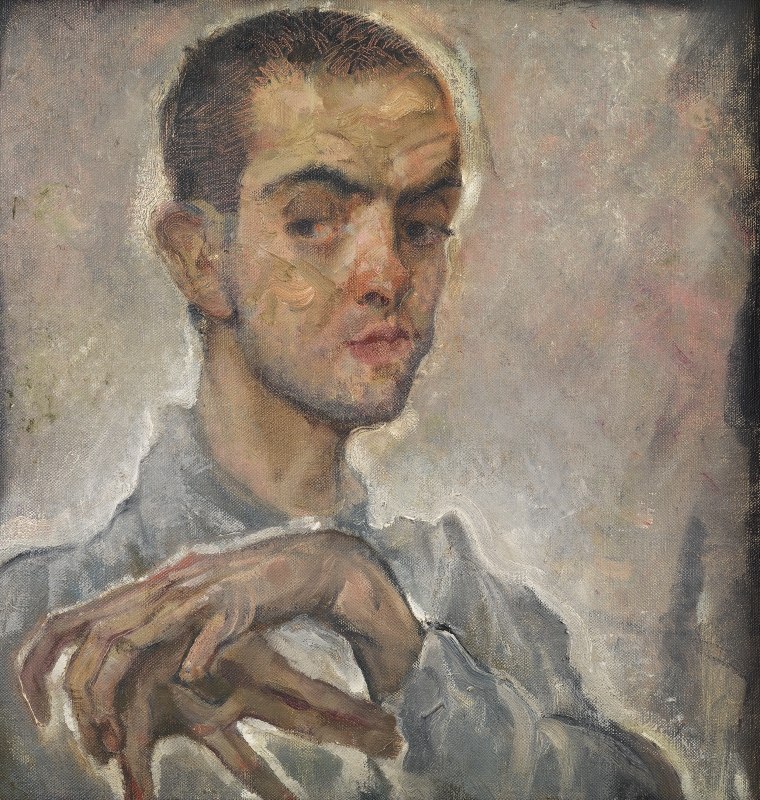
Max Oppenheimer, whose career was disrupted and paintings were looted by the Nazis
The novel, whose central characters are a pair of upper middle-class Jewish writers, who were part of Freud’s circle which met regularly at Café Mozart, details an identity change ring to erase their Jewish past so they can continue writing and publishing under their new Aryan names. Except for one major incident though – as Chekhov says when a gun appears in the first act it must go off in the final act and this one does – theirs is a passive resistance. It contrasts with a recent article in The Guardian which describes the work of a Viennese woman in exile as part of the Communist-led Österreichische Freiheitsfront, the Austrian Liberation Front, where women, who could carry messages more easily, constituted the communications connective tissue of a group that actively gathered information and ultimately helped sabotage German factories.
This past is now being questioned, but in some ways the questioning is muted, a testimony to the persistence of the Nazi past. At the Wien, there is a room where the story is told of an attempt at denazification which quickly is snuffed out. However, the information is concealed behind a series of closed doors, so visitors opening the doors will get the story of the restoration of the past – but those not wanting to hear the story can simply walk through the room without opening the doors.
There was a similar reticence in the Natural History Museum’s exhibit “The Changing Arctic,” which is very good on the shrinking of the Arctic to the point where the continent now absorbs half the solar energy it did in 1980, and in pointing out that the Austrian Alps are expected to be entirely free of ice in the next 50 years.
However, there is not a word in the exhibit about the geopolitical strategic nature of the continent as the source of now more easily mineable minerals. Siberia, the largest bordering land mass, was seen as the grand prize if the U.S. proxy war in Ukraine on Russia had succeeded in breaking up the country.
The story told behind closed doors at the Wien is devastating. The denazification period effectively ended in 1947-48 when the Allies (U.S., British, French) started the Cold War, with the new enemy being the U.S.S.R. The story quickly changed in Austria from its citizens lining the streets to support Hitler, to Austria being the first victim of Hitler.
What followed was a rapid re-entry of former Nazis back into power. The Albertina Modern for example details how Oscar Kokoschka had to go into exile, but a lesser Expressionist artist Herbert Boeckl who joined the Nazi Party in 1941. In 1946 he was censored for failing to register as a former party member, but by 1952 was reinstated and represented Austria at that year’s Venice Biennale, the top national honor for any artist.
The actress Paula Wessely, star of the Nazi film Homecoming which justified the invasion of Poland, by 1948 was playing a half-Jewish victim of the Gestapo. When a bombed-out and then rebuilt Staatsoper, the national opera house, reopened in 1955, the opening night conductor of Beethoven’s only opera Fidelio was Karl Bohm, a Nazi sympathizer who the Allies had banned from public appearances.
This year’s world-renowned Vienna Symphony New Year’s concert featured a long video intermission about two boys who romp in the town of Linz over the music of Anton Bruckner in this, his centennial year. However, the lilting green fields and the mediaeval churches never hint that this, Hitler’s hometown, was the site of a massive German wartime arms industry. The Wien does an excellent job at disgorging this history – but it’s one that in its display is still kept in the closet.
Peace and Death
Finally, two exhibits summed up where we are today and where we have come in 2023. The first, “Peace,” at the Judenplatz Museum in the square that houses a memorial to the Jewish dead in the Holocaust, had an excellent piece by a Palestinian artist literalizing the prophet Isaiah’s words about transforming swords into ploughshares, with a rifle on top that then transmutes into a shovel below.
The museum points out that the Hebrew word for peace “shalom” and the Arab word “salam” are nearly the same, but then also features an exhibit with the Oslo Accords, which were supposedly the blueprint for a Palestinian state, written on toilet paper – which is exactly what they have been consigned to.
The problem with the exhibit though is that at various points it presents peace as a thing of the past, after October 7th in Israel and after the Russian special military operation in Ukraine. These events the museum states have “destroyed all prospects for peace for the time being.” This is false. At the moment when peace becomes a political issue, i.e. a ceasefire in Gaza and a negotiated settlement in Ukraine taking Russia into account in any consideration of European security, the museum denies its efficacy, which leads one to conclude that peace was not a real position but only a politically expedient one, used in the museum world to solicit funds.
A far more telling summing up of 2023 was to be had at The Dom, the museum of St Stephen’s Cathedral, whose exhibit “Being Mortal” might rather simply be titled “Death,”. And 2023 was a year not of peace but of death, in Ukraine, in Israel, in Gaza, with more death on the way as we usher in 2024 in Yemen, Lebanon, Iraq, Syria and Iran and with a potentially new killing field involving global war in Taiwan.
The images in the Dom are startling. There are James Ensor’s skeletons seeking warmth in his 1896 “Death Chasing a Flock of Mortals”; Max Beckman’s 1916 frail, stretched-out victims of World War I, waged by the French and German elites on its working class in “Assault,” to the star of the show Alfred Kubin’s corpselike faceless woman, not a Florence Nightengale angel of mercy but an angel of death, with her hand over the mouth of a lifeless corpse of a soldier in bed.
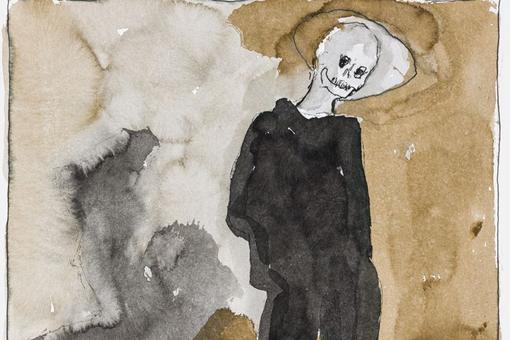
Gunter Brus’ “Young Death” at the Dom Museum
“Young Death” is Gunter Brus’ 2020 watercolour depiction, in the tradition of Ensor and Kubin, of a skeleton in tattered black garb that suggests the toll on the planet’s youth by Covid, drugs and war.
And finally there is Jan Bruegel the Younger’s “Triumph of Death” a reimagining of his grandfather’s painting where death is even more all-encompassing and omnipresent than in the original – this version was painted in 1602, two years into Europe’s most vicious killing based on religion, the 30 Years War.
If “Death” was a more fitting summation of 2023 than “Peace,” that theme also resounded at the end of the Staatsoper’s magnificent staging of Richard Strauss’ Elektra. The end result of all of Elektra’s scheming to revenge her father’s death by having her brother kill her mother results in Electra herself being strangled by the ropes suspended from the headless giant of her father that looms over her.
Her revenge condemns her, as death shadows even the most comfortable European cities and as the world, often propelled by the excuse of revenge, seems to move inexorably toward more confrontation and destruction.


